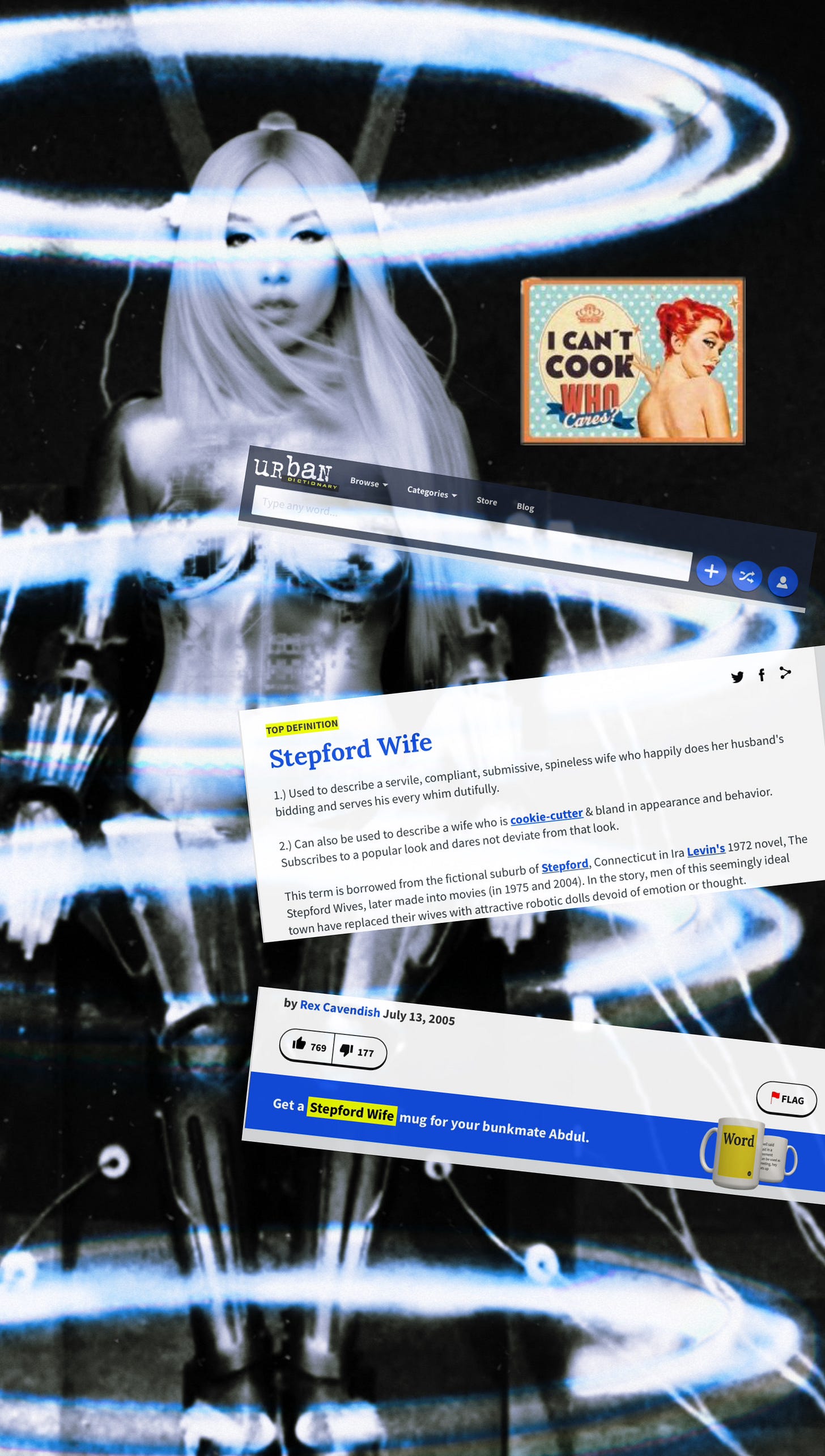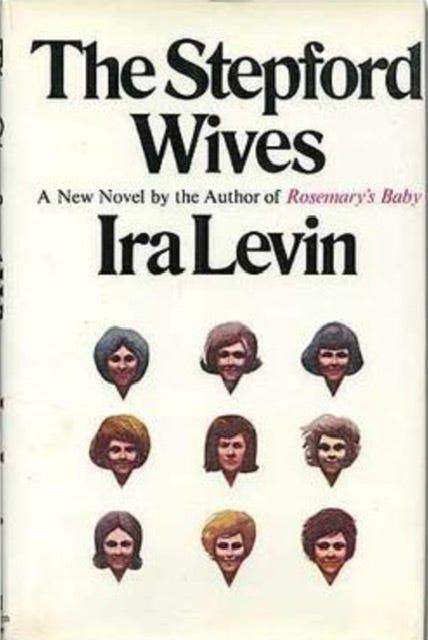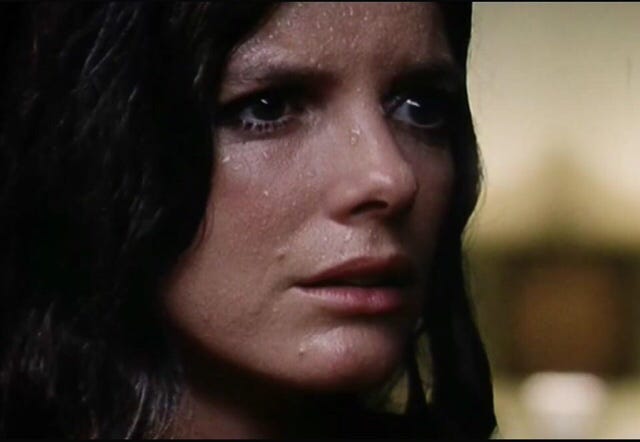“Daddy I just saw a man carrying a naked lady.” --Kim Eberhart. “Well, that’s why we’re moving to Stepford.” --Walter Eberhart
The spoiler alert is a part of our vernacular in our era of the binge. It is just good manners to warn a fan of say, Game of Thrones, who is trying to get through 73 episodes and does not wish to find out who has their eyes poked out in episode 32. Such warnings aren’t necessary for movies like The Stepford Wives (1975), not because it has been in release for nearly a half century, but because the term itself has become part of the culture.
Whether you have seen it or not, you know what is going to happen.
Imagine Jordan Peele, director of Get Out (2017), having a momentous childhood experience upon finding and viewing a clunky VHS of a movie made four years before he was born. Peele has acknowledged the influence of Connecticut's most famous mechanical moms among his cinematic inspirations, alongside Rosemary’s Baby (1968).
Both works came during Ira Levin’s streak of professional sizzle which began with the 1967 publication of that novel, centered around an expectant mother’s struggle not only with her dishonest husband but a slew of Satan-worshipping neighbors. His unintentional trilogy concluded with the film release of The Boys from Brazil (1976), wherein a veterans organization of aging Nazis headquartered in South America plotted to launch a Fourth Reich.
Between those disturbing tales came the novel The Stepford Wives in 1972, a mere nine years after Betty Friedan helped ignite second-wave feminism, aka women’s liberation with The Feminine Mystique (1963). Leviin’s novel, followed by the movie three years later, is a footnote to a movement Life Magazine described in 1970 as “the revolution that will affect everybody.”
Cashing in on the times, Levin invented a community based on Wilton, Connecticut. Here the women who had moved to the suburbs were being replaced by animatronic replicas who loved to cook, clean, have sex, cook, clean, and have more sex.
Joanna Eberhart, young mother of two and burgeoning photographer, smells a rat. Things are a little too perfect, especially for the Stepford husbands. It’s all a sham, a social backlash devised by a Men’s Association that is up to much more than neighborhood covenants and backyard barbecues. What the hell is going on?
It was a cautionary tale, part Twilight Zone and part Handmaid’s Tale. You know what is going to happen, but watch for these points of interest along the way:
In the film’s opening moments, as the family piles into their tank of a station wagon, Ross snaps a photo of a young man crossing the street carrying a nude mannequin.
The late screenwriter William Goldman wrote that his models for Katherine Ross’s character as well as that of her friend portrayed by Paula Prentiss were TV stars of the day Mary Tyler Moore and Valerie Harper. The lead was first offered to Diane Keaton, who declined on the advice of her analyst.
Think about Get Out during Carol Van Sant’s apology scene.
Disney takes a real bashing in the film, more than once crediting the styling and creation of the replacement fembots to members of the men’s club who created such attractions as Pirates of the Caribbean.
Goldman publicly complained for years that the film was ruined by director Bryan Forbes' choice to cast his wife, actress Nanette Newman, as one of the domestic playthings. Be aware of the light, the costuming, and the overall atmosphere. According to the screenwriter, the entire look of the movie was changed to accomodate Newman. That resulted in modest prairie-chic dresses and picture hats. Forbes, who took an umbrella over the head during one of the protests for the movie, disputed the charge.
See what he said in the attached documentary The Stepford Life (2001), produced for the film’s 25th anniversary. More flavor of the times can be seen in the documentary Women’s Liberation (1970) and the industrial film Selling Cars to Women (1970).
The “2-Minute Twilight Zone” is an abbreviated Episode #100 from The Twilight Zone featuring a famous Ray Bradbury short story about a bespoke robot grandmother. Captain Marvel focuses on the Scorpion in “Lens of Death.” The cartoon is a color spectacular from Fleischer Studios that unveils a lot of robotic surprises from the 1930’s World’s Fair.
Enjoy the movies! For the time, the original version of The Stepford Wives was cutting edge psychological horror. Who knew men could be such jerks?
“I’ll just die if I don’t get this recipe. I’ll just die if I don’t get this recipe. I’ll just die if I don’t get this recipe.”
--Carol Van Sant











